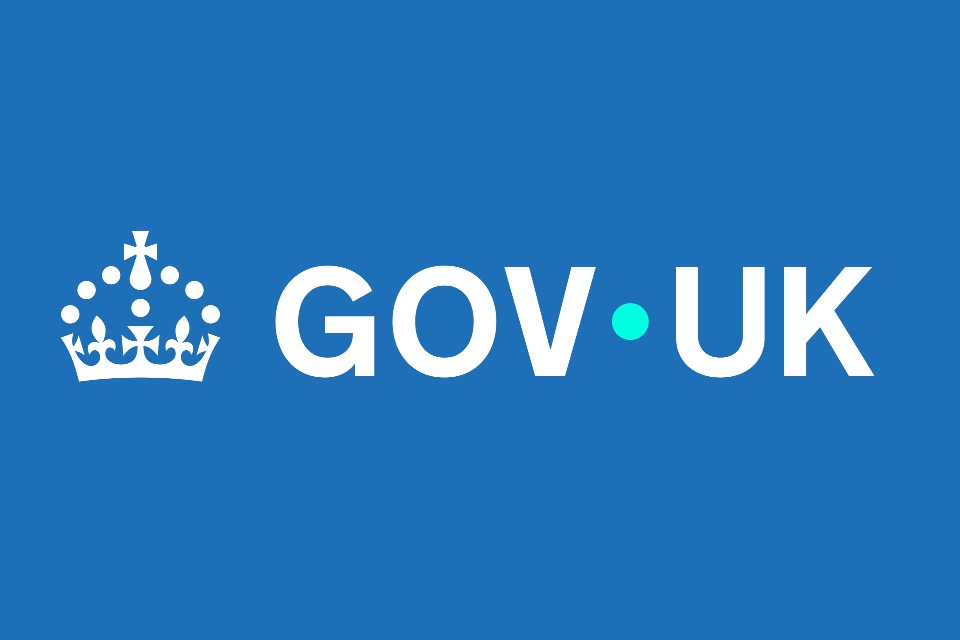New version of approval process will be a tied to a wide range of additional technical and commercial guidance aligned to government’s digital roadmap, while also offering potential greater independence
The Cabinet Office has published detailed new spending controls that demand departmental commitments including “no automatic contract extensions” while offering “earned autonomy” for organisations that demonstrate rigorous assessment of their own projects.
Published on Friday, version 6 of the government’s Digital and technology spend controls are intended to work in conjunction with several other pieces of guidance. This includes two newly created sets of rules – the Risk and importance framework, and the Digital and data function’s strategic commitments – as well as the existing Technology Code of Practice. The delivery and enforcement of all these guidelines is overseen by the Cabinet Office-based Central Digital and Data Office.
As before, all spending of more than £100,000 on citizen services is required to go through the controls process, as is all other digital and data spending in excess of £1m. All investment in cryptography products – regardless of value – require assessment and approval.
The intention of the new additional rules is to ensure that projects are aligned to government’s wider transformation roadmap, while enabling CDDO to better identify programmes that carry the highest degrees of risk.
The new strategic commitments guidance document states that departments “must consider [these] as part of the… spend control process”.
Agencies seeking approval for spending will be asked whether or not their projects align to the various commitments – which are closely tied to the objectives set out in the six missions defined by government’s three-year digital and data roadmap, published in 2022.
“Answering ‘no’ will not lead to an automatic rejection and you will need to explain why your spend cannot align to the commitment,” the guidance says.
“An argument for contract extension based on having insufficient time to consider alternatives is not sufficient grounds for approval”
Guidance on automatic contract extensions
On the roadmap’s mission of “transformed public services that achieve the right outcomes”, departments will be asked to agree to three commitments: to provide quarterly service performance data; use mandated central services, such as GOV.UK Notify and Pay; and use GOV.UK domains and the GOV.UK design system.
Agencies will also be expected to commit to using the new One Login system, to “make essential shared data assets usable across government”, and to ensure that delivery of the project in for which approval is sought is “overseen by a named crown or public servant”.
There are also two required commitments intended to support the mission of ensuring efficient, secure and sustainable technology across government: prevent technical debt and legacy; and follow the government cyber security standard.
Alongside these demands aligned with the government roadmap, there are also four specified requirements constituting “digital best practice in support of [the] commitments”.
The first of these best-practice requirements asks that government bodies “separate service integration from service provision” – ensuring that separate suppliers are appointed for these two distinct requirements.
Another new rule demands that there are “no automatic contract extensions” for digital and technology engagements, and that “contractual exit plans must be developed as an alternative to extension – or evidence provided for why an extension is both legally allowed and value for money”.
Detailed guidance on this requirement specifies that “an argument for extension based on having insufficient time to consider alternatives is not sufficient grounds for approval”.
The final two requirements ask that departments ensure they are complying with both accessibility and data-protection regulations.
Risk and reward
The other major new element of the controls is the risk and importance framework. The guidelines, which are intended to better identify potential high-risk plans, cover four types of investment, including: digital services; platforms and common components; commodity technology and licences; and specialist technology.
In each of these areas, organisations seeking approval will be asked a variety of questions intended to cover issues of: cost; value; risk to users; delivery team capability; novelty of technology; previous delivery quality; and political priority.
Having answered all these questions, each submission for approval will be assigned an overall risk and importance rating of high, medium, or low.
£100,000
Threshold at which spending on public-facing digital services requires approval
5%
Proportion of projects – selected at random – CDDO will continue to assess once a department has achieved ‘earned autonomy’
12 months
Minimum length of time in advance departments should begin the approval process
2018
Year in which version 5 of the spend controls were introduced
If a project is deemed to be high risk, CDDO will work closely with an organisation’s assurance professionals throughout, while a medium rating will result in lighter-tough level of consultation with the digital unit. If the submission is rated as low risk, no additional assurance support will be required.
Alongside the controls, new guidance has also been issued outlining how departments can achieve “earned autonomy”, granting them greater authority to self-assure their own projects at medium and low levels of risk and importance, and enjoy higher spending thresholds. To achieve such independence, organisations “must demonstrate that your organisation is continually achieving all the criteria in the ‘good’ category” of assurance guidelines.
“CDDO will propose a level of autonomy for your organisation and tell you what you will need to do to get that level,” the guidance says. “Your organisation must accept the proposal and agree to the recommendations. CDDO will write to its minister recommending that your organisation is granted ‘provisional earned autonomy’. The provisional status will run for a minimum of three months. During the provisional stage, CDDO advisers will review half of the decisions made by your assurance team and provide feedback. If your organisation is found to be making consistently good decisions, CDDO will recommend the minister grants you ‘earned autonomy’.”
Even after a department has been approved for this greater autonomy, CDDO will keep an eye on its activity to ensure it is continuing to adhere to the expected standards.
“CDDO… will randomly sample 5% of cases or any additional or unusual cases a CDDO advisor notices on your pipeline,” the guidelines say. “If a CDDO adviser notices consistent deficiencies, CDDO will ask you to implement an improvement plan and revert your organisation to a ‘provisional earned autonomy’ state. If your organisation does not make these improvements within the agreed time, the CDDO will recommend that the minister revoke the organisation’s earned autonomy, reverting the department to default levels.”
The controls clarify that approval should be sought at regular intervals throughout the delivery of a project, including the creation of strategic, outline and full business case, throughout the procurement process, and at the commencement of each phase of an agile project: discovery; alpha; and beta.
The latest version of the controls will maintain the long-term pipeline model first introduced in 2018 – and which it was recently revealed that all departments have now adopted. The controls state that agencies should begin the approval process “when you start to plan or up to 12 months before you expect to start spending”.
Alongside the new version of the controls, a dedicated digital service is also being introduced through which departments can submit their claims for approval. Previously, submissions were made by email.
The service will be rolled out across government in the coming weeks and, until an organisation is able to switch to using the new tool, their claims will continue to be assessed against version 5 of the controls.
A Cabinet Office spokesperson said: “The Digital and Technology Spend Control, originally published in 2018, ensures departments and other public bodies spend on digital and technology is in line with government priorities and represents the best value for money. The update to the Digital and Technology Spend Control guidance aligns to our commitments in the government’s digital future roadmap, and ensures all money spent helps us in achieving this goal, whilst cutting down on bureaucracy and red tape.”





벼룩시장 신문그대로보기 (구인구직, 부동산) 벼룩시장 신문그대로보기 바로가기 그리고 지역별 벼룩시장 종이신문그대로보기 방법 (구인구직, 부동산) 알아볼게요. 교차로신문 같이 벼룩시장은 지역별 일자리, 구인구직, 부동산 등 다양한 정보를 제공해요. 교차로신문그대로보기 바로가기는 아래에서 확인하고, 오늘은 벼룩시장 신문그대로보기 바로가기 그리고 사용법 섹스카지노사이트
양산시술출장마사지
이태원게이바
https://klero.tistory.com/tag/카카오톡20초코20이모티콘20얻는20방법
울산콜걸
It’s in fact very complex in this full of activity life to
listen news on TV, thus I simply use web for that reason, and obtain the latest news.
https://pornmaster.fun/hd/江苏快三全天计划ww3008-cc江苏快三全天计划-xhp
https://pornmaster.fun/hd/跑步机后入番号ww3008-cc跑步机后入番号-dwk
https://pornmaster.fun/hd/son-sax-mom-mp3sex-sex-wap-com
https://pws1999.tistory.com/85
https://mrdeeply.tistory.com/4
대전호박나이트
여행지
https://itlearn.kr/파워포인트-무료설치-다운로드-방법/
벼룩시장 구인구직 및 신문 그대로 보기 (PC/모바일) | 구인구직 앱 어플 무료 설치 다운로드 | 모바일 벼룩시장 보는 방법 | 벼룩시장 부동산 | 지역별 벼룩시장 | 벼룩시장 종이신문 에 대해 알아보겠습니다. 섹스카지노사이트
하동동해출장만남 소자본 창업
하동동해출장만남 소자본 창업
여행지
https://itlearn.kr/
https://itgunza.com/557
https://itgunza.com/961
https://honeytiplabs.com/갤럭시-화면-자동-꺼짐/
https://honeytiplabs.com/아이폰-분할화면/
대전나이트클럽
이태원게이바
하동동해출장만남 소자본 창업
https://ddnews.co.kr/blog/2022/03/11/retirement-income/
울산콜걸
There are some interesting time limits in this article however I don’t know if I see all of them heart to heart. There’s some validity however I’ll take hold opinion till I look into it further. Good article , thanks and we want extra! Added to FeedBurner as effectively
https://nicesongtoyou.com/welfare/support-fund/
충무로출장업소
울산콜걸
https://sportscom.co.kr/u-20-asian-cup/
https://chotiple.tistory.com/tag/목포교차로20구인구직
https://madreviewer.tistory.com/tag/아이폰20테마
https://news.gorgopage.com/274
https://madreviewer.tistory.com/tag/EBB984EBB080EBB288ED98B820ECB0BEEAB8B020EBA19CEBB894EBA19DEC8AA4
https://nicesongtoyou.com/welfare/child/
https://dnolife.net/software/madadam/
https://nicesongtoyou.com/tax/corporate-tax/
https://dnolife.net/software/memoit/
https://arlstory.com/albamon-gyeong-gi/
https://dnolife.net/software/ldplayer/
수원출장샵
https://itgunza.com/633
https://itmoney4you.com/ebb984ebb080ec9d98ec97acec9e90-ec9eacebb0a9ec86a1/
https://itgunza.com/999
https://itmoney4you.com/한게임-신맞고-설치/
I do not even understand how I ended up right here, however I believed this submit was great. I do not understand who you might be but certainly you’re going to a well-known blogger when you aren’t already 😉 Cheers!
https://madreviewer.tistory.com/entry/애플TV-사용법-및-알아두면-좋은-꿀-팁-공유합니다
https://kakaotaxi.dasgno.com/page/5
https://madreviewer.tistory.com/entry/EAB0A4EB9FADEC8B9Ca32-EC8AA4ED8E99-EBB08F-EC9E90EAB889ECA09C-EAB5ACEBA7A4-EAB3A0EBAFBCED95B4EAB2B0
https://k-studio.kr/법무부-온라인민원서비스-2-변호인접견-신청방법/
https://www.ohgunstory.com/entry/NSED9988EC87BCED9591-EAB3A0EAB09DEC84BCED84B0-ECA084ED9994EBB288ED98B8-EC958CEBA6BC
I simply had to say thanks all over again. I’m not certain the things I could possibly have done without the thoughts shown by you directly on my concern. It previously was the daunting circumstance in my opinion, however , seeing a skilled manner you dealt with that made me to cry for joy. I’m happy for this support as well as have high hopes you know what a great job you are providing teaching men and women through a site. Probably you haven’t come across any of us.
https://www.ohgunstory.com/entry/Allpdf-EC9DB4EC9AA9ED9598EAB8B0
https://k-studio.kr/page/7/
Right now it seems like WordPress is the top blogging platform out there right now. (from what I’ve read) Is that what you’re using on your blog?
I am not sure where you’re getting your info, but good topic. I needs to spend some time learning more or understanding more. Thanks for fantastic info I was looking for this information for my mission.
I used to be very pleased to find this net-site.I wished to thanks for your time for this wonderful read!! I positively having fun with every little bit of it and I have you bookmarked to take a look at new stuff you blog post.
https://goldmonster.tistory.com/entry/EB8F99EC8BA0EB8C80-LMS-ED9599EC8AB5EAB480EBA6ACEC8B9CEC8AA4ED859C-ED9988ED8E98EC9DB4ECA780-EBB094EBA19CEAB080EAB8B0-lmsdsuackr
I would like to thank you for the efforts you’ve put in writing this site. I am hoping the same high-grade site post from you in the upcoming as well. Actually your creative writing skills has inspired me to get my own web site now. Actually the blogging is spreading its wings fast. Your write up is a good example of it.
https://goldmonster.tistory.com/entry/EAB1B4EC84A4EAB8B0ECB488EC9588ECA084EAB590EC9CA1-EC9DB4EC8898ECA69D-EBB09CEAB889E385A3EC9EACEBB09CEAB889
I enjoy you because of each of your hard work on this site. Gloria really likes working on research and it is easy to understand why. Most people notice all concerning the powerful means you make insightful solutions through this website and as well attract participation from people on that article and our own daughter is really being taught a great deal. Take advantage of the rest of the new year. Your carrying out a good job.
대전세븐나이트
https://gorgopage.com/2024년-띠-무슨해-삼재띠-청룡띠-운세-공휴일-달력-한번/
아름다운스웨디시업소
https://souhaya.tistory.com/2800
https://souhaya.tistory.com/754
http://baekis.egloos.com/photo/
Howdy! This post could not be written any better! Reading this post reminds me of my previous room mate! He always kept chatting about this. I will forward this page to him. Pretty sure he will have a good read. Thank you for sharing!
Thanks , I’ve recently been looking for information about this topic for ages and yours is the best I’ve discovered till now. But, what about the conclusion? Are you sure about the source?
We’re a group of volunteers and opening a new scheme in our community. Your web site offered us with valuable info to work on. You’ve done a formidable job and our entire community will be thankful to you.
Hello. remarkable job. I did not expect this. This is a great story. Thanks!
The very crux of your writing while sounding agreeable originally, did not really settle very well with me after some time. Someplace throughout the sentences you managed to make me a believer unfortunately just for a short while. I nevertheless have a problem with your jumps in assumptions and you might do nicely to fill in those breaks. If you actually can accomplish that, I would definitely end up being impressed.
whoah this blog is great i like reading your articles. Keep up the great work! You know, a lot of persons are looking round for this info, you could aid them greatly.
https://dday.tistory.com/1109
Pornstar
Buy Drugs
Scam
https://infohelpforyou.com/tag/eb8298ec819cec9784eba788-eb8ba4ec8b9cebb3b4eab8b0/
Viagra
Pornstar
https://mintfin.tistory.com/tag/갤럭시폴드사진
Insuring that coders are educated is a long-term strategy for improving the accuracy of billing.
Medical staffing agencies that employ certified coders help reduce administrative burdens.
Correct coding does not just streamline billing but also increases overall efficiency.
Continuous training in the field of coding standards helps staff be prepared for changes in industry regulations and.
Professionally trained coders ensure that healthcare providers receive the compensation they are entitled to.
Healthcare organizations benefit greatly from recruiting agencies that concentration on certifications for coders.
https://klero.tistory.com/tag/컴시간20알리미20학생용20아이폰
https://bestkkultip.tistory.com/32